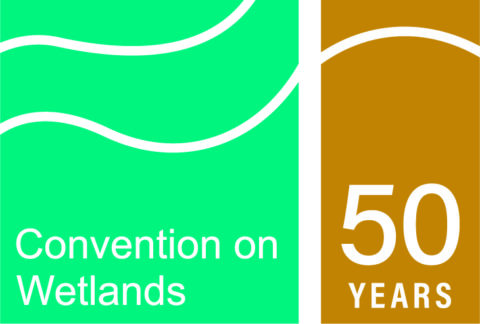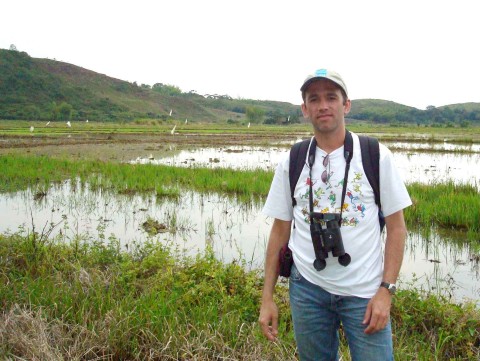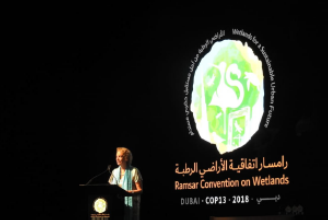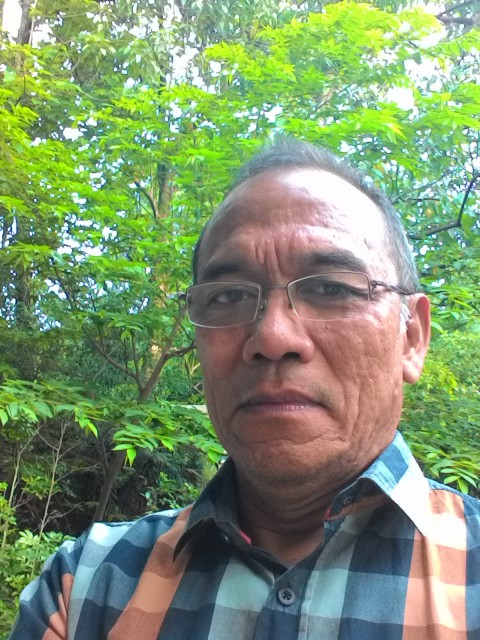Celebrating 50 years of a wetland convention for collaboration across borders
-
Aquaculture, fisheries and coastal agriculture
-
Climate and disaster risks
-
Climate mitigation and adaptation
-
Coastal resilience
-
International Waterbird Census
-
Species
This year marks the 50th anniversary of the Ramsar Convention, the intergovernmental treaty which commits countries to the ‘wise use’ of wetlands, to list and manage special sites, and to cooperate on transboundary wetlands and species. Here, Wetlands International experts reflect on the impact of what has been achieved so far – and what is needed in the coming years to meet the scale of the challenge facing these precious ecosystems.
What is the Ramsar Convention?
 The Ramsar Convention on Wetlands is the oldest of the modern global intergovernmental environmental agreements. The treaty was negotiated through the 1960s by countries and non-governmental organisations, including Wetlands International’s predecessor organisations, concerned about the increasing loss and degradation of wetland habitat for migratory waterbirds. It was adopted in the Iranian city of Ramsar in 1971 and came into force in 1975.
The Ramsar Convention on Wetlands is the oldest of the modern global intergovernmental environmental agreements. The treaty was negotiated through the 1960s by countries and non-governmental organisations, including Wetlands International’s predecessor organisations, concerned about the increasing loss and degradation of wetland habitat for migratory waterbirds. It was adopted in the Iranian city of Ramsar in 1971 and came into force in 1975.
From waterbirds to wise use of wetlands
In the early days of conservation, there was a focus on species, and Wetlands International’s predecessor organisations were concerned with migratory waterbirds. Through its monitoring and assessing of waterbirds, Wetlands International understood that the main factor affecting declining waterbird populations was the loss of wetlands around the world.
We brought wetlands into the remit of the organisation’s work, and pushed for a convention that would allow for governments to collaborate across borders to work towards safeguarding wetlands as key resources for nature. One the core components of the convention is the concept of wise use, ‘the maintenance of ecological character, achieved through the implementation of ecosystem approaches, within the context of sustainable development‘. Wetlands International hosted the earliest Secretariat and was present in the signing of the Ramsar Convention in 1971. We have since been involved providing technical support, and supporting on tackling key issues and opportunities for wetlands.
Societal shifts that will make a difference for wetlands – Jane Madgwick, CEO, Wetlands International
In its 50 years the Convention has achieved a great deal. There are now 171 countries engaged as Parties, a whole global community of wetland managers and an immense and valuable knowledge base on wetlands and wetland management. The vision and foresight of the founders ensured that this Convention was framed broadly to encompass benefits to people as well as nature. And over the years, the role that wetlands need to play in sustainable development and in tackling poverty reduction, human health, climate change, and disaster risk reduction have been brought under the spotlight.
However, despite this, the Ramsar Convention has not been able to keep up with the growing threats and challenges that face wetlands. Wetlands around the world are being built on, drained, polluted, dried out and burnt. We are losing wetlands three times faster than forests and paying a heavy cost of this as a society in every region of the world. Water scarcity and droughts, intense floods, devastating fires, coastal erosion, heat stress and waterborne diseases are all symptoms of wetland decline.
So, why have we failed? One basic reason is that the traditional site-based approach to conservation is totally inadequate for wetlands because they are part of wider water systems. Safeguarding and revival of wetlands on a big scale will depend on there being a multi-sectoral, whole of society response across whole landscapes – and that requires different policies, institutions and investment behaviours. Wetland conservation is no longer just a hobby of naturalists, it is an essential strategy to ensure a liveable planet Earth. It’s going to take a real stepping up of effort by all the different sectors and conventions, and not just Ramsar, to safeguard the remaining wetlands and to bring others back into good condition.
We must act now to safeguard those wetlands which are critical to sustain life and limit climate change. Beyond this, recovery and regeneration of degraded wetland landscapes and harnessing the benefits of wetlands in cities, need to be adopted as essential strategies to achieve the Global Goals 2030 – which promise a safe, equitable and peaceful world.
There are some causes for optimism: with the information technology revolution, we can make wetland information easily available to all. Such knowledge is powerful in the hands of wetland communities – and is an enabler for positive local action. There is a growing movement, especially among indigenous groups to recognise and protect the rights of wetlands. And interest and investment in the design and establishment of wetlands as natural infrastructure solutions to tackle rising water risks, is accelerating. These shifts could all be game-changers for wetlands in the 2020s.
The multiple values of wetlands and the need to rethink wise use – Ritesh Kumar, Director South Asia, Wetlands International
 The progenitors of Ramsar Convention were far-sighted in phrasing wise use as the central tenet for wetlands management. Coined prior to Stockholm Conference, this was a philosophy that marked a novel framing of human-nature interdependency as the basis of delivering conservation as well as sustainable development outcomes.
The progenitors of Ramsar Convention were far-sighted in phrasing wise use as the central tenet for wetlands management. Coined prior to Stockholm Conference, this was a philosophy that marked a novel framing of human-nature interdependency as the basis of delivering conservation as well as sustainable development outcomes.
In 1960s and 1970s, when the Convention took shape, concerns related to wetlands were centered on decline on species. Unfortunately, this continues. The Anthropocene, however, has engendered notions of increased connectivity and coupling between individuals, societies and environmental change.
Managing wetlands in this era of rapid human-mediated transformation requires analytical approaches, which consider integrated systems of human and nature as a unit of analysis, overcoming the human-nature dualism which has underpinned conservation approaches so far.
The predominant ecological construct of wise use today results in a partial view based on stationarity, but this needs to be updated, building on multiple values on a worldview perspective that defines human-wetlands linkages. The full scale of values, from intrinsic, instrumental to relational, from diverse epistemologies, from indigenous to western, needs to be embraced in the framing of wise use.
The most critical challenge for wetlands now and into future is to enable governance transformations in a world where wetlands change in an uncertain environment will be the norm, and surprise rather than predictability will face wetlands managers.
Key characteristics of wetlands governance that are likely to be suited in such complex polycentric contexts are being: interactive (consciously interacting with decision-making centers to define as well as realize wetlands wise use goals); reflective (reassessing management practices and adjusting governance mechanism enabled by continuous learning); reflexivity (by calling into question the governance foundations and envisioning alternatives and shaping the foundations) and inclusion (supported by democratic institutions, participation and policy coherence). For further reading click here.
Private sector commitment to wise use – Daniel Blanco, Director Latin America & Caribbean, Wetlands International
 This year it is also 30 years that Argentina signed the Ramsar Convention, so we also have something more to celebrate at country level. The Convention put in place the framework that was used by local, provincial and national governments to advance knowledge development, awareness raising and actions towards wetland conservation. It has achieved much but more action is still needed to reach impact, particularly to get the commitment of the private sector towards wetlands conservation and wise use. In Argentina, private sector –many times in association with governments – are the key actors changing land use and impacting wetlands.
This year it is also 30 years that Argentina signed the Ramsar Convention, so we also have something more to celebrate at country level. The Convention put in place the framework that was used by local, provincial and national governments to advance knowledge development, awareness raising and actions towards wetland conservation. It has achieved much but more action is still needed to reach impact, particularly to get the commitment of the private sector towards wetlands conservation and wise use. In Argentina, private sector –many times in association with governments – are the key actors changing land use and impacting wetlands.
What is needed from the convention in the next 50 years to meet the scale of the challenge? We need to continue learning how to work with the private sector and, together with governments, how to create new incentives that could facilitate the involvement and commitment of the private sector and the companies. There is a big gap already between the companies’ speech and the concrete actions to contribute to wetland conservation in Argentina.
Integrating wetlands into broader planning frameworks – Irina Kamenova, Programme Coordinator, Russia
 The great and unique role of the Ramsar Convention is that it was the first global environmental agreement, and many ideas which are now commonly accepted were first introduced by the Ramsar, and then developed further by other conventions and conservation organisations. Ramsar’s wise use concept provided a basis for the concept of sustainable development is a good example.
The great and unique role of the Ramsar Convention is that it was the first global environmental agreement, and many ideas which are now commonly accepted were first introduced by the Ramsar, and then developed further by other conventions and conservation organisations. Ramsar’s wise use concept provided a basis for the concept of sustainable development is a good example.
Presently, the implementation of the Convention on Wetlands is linked with implementation of other multi-lateral environmental agreements of the biodiversity cluster, but in the 1970s, it was of outstanding value for the protection of wetlands and water birds, as well as for international cooperation on wetland-related research and wise use practices, which was of particular importance for the conservation community in my country. The Ramsar Convention was very well known in Russia at that time. A national expert network was established to co-ordinate large-scale wetland inventory and waterbird monitoring activities throughout the country. I was lucky to know several people who worked on the Ramsar Convention from the early phases of its development, they were really devoted to this work, and provided their help and advice to the Wetlands International Russia Office when it was established in 1997.
Over the years, the Ramsar Conference of the Parties (COP) has adopted a considerable body of scientific, technical and policy guidance to support Parties in addressing wetland issues. The clean water shortage is among those problem areas where these efforts still face the greatest difficulties. These issues need to be addressed through the integration of wetland conservation and restoration into river basin management and broader planning frameworks, such as regional development plans and sector-specific strategies.
Ensuring resolutions are implemented – Nyoman Suryadiputra, Director Indonesia, Wetlands International
Most of the seven Ramsar sites in Indonesia are located in peat swamp forests – Berbak, Sembilang, Danau Sentarum, Wasur, Tanjung Puting. The status of the Ramsar sites as conservation areas has helped secure natural peat swamps forests not least from massive private conversion, although there has been encroachment on several Ramsar sites by the community. The limited government budget to manage, patrol and secure Ramsar sites as well as the limited number of rangers in the field means that Indonesian Ramsar sites are not completely free from encroachment.
Almost every Ramsar Conference of the Parties, attended by its members, various resolutions have been put forward and adopted, which have helped advance wetlands in a variety of discussions and dialogues around the world. However, for resolutions to be truly effective and to have impact on Ramsar sites, they need to be evaluated more thoroughly and to ensure that they have been implemented.
Finance to secure nature-based solutions – Annadel Cabanban, Program Manager Philippines, Wetlands International
 In view of the unabated decline in area and ecosystem services of wetlands globally and more so in Asia, over the next 50 years the Convention needs to energise the COP to make general or specific recommendations to Parties regarding the conservation, management and wise use of wetlands and their flora and fauna. This role of the Conference is more crucial now with the confounding factors from socio-economic drivers and climate change impacts.
In view of the unabated decline in area and ecosystem services of wetlands globally and more so in Asia, over the next 50 years the Convention needs to energise the COP to make general or specific recommendations to Parties regarding the conservation, management and wise use of wetlands and their flora and fauna. This role of the Conference is more crucial now with the confounding factors from socio-economic drivers and climate change impacts.
Working with global financial institutions to secure investments for nature-based solutions and to promote wise-use of wetlands is now needed. Working in synergy with the Convention on Biological Diversity on the ecosystem approach for the conservation of coastal wetlands that are also the base of fisheries would help strengthen this. It could be that waterbirds and shellfishes are better flagship species for coastal wetlands for the next 50 years.
EU recognition for wetlands carbon and biodiversity values – Henk Zingstra, Associate Expert, Wetlands International
 The Ramsar Convention has played an important role in the EU to highlight the importance of wetlands for biodiversity and to protect wetlands from being drained. With the Birds and Habitats Directives entering into force many wetlands with high values for biodiversity got additional protection. However the important role wetlands play in climate change adaptation and mitigation is still largely undervalued, not only in the EU but also in the rest of Europe.
The Ramsar Convention has played an important role in the EU to highlight the importance of wetlands for biodiversity and to protect wetlands from being drained. With the Birds and Habitats Directives entering into force many wetlands with high values for biodiversity got additional protection. However the important role wetlands play in climate change adaptation and mitigation is still largely undervalued, not only in the EU but also in the rest of Europe.
Wetlands can store water to prevent flood waves in rivers, wetlands help to recharge groundwater levels, wetlands store CO2 and wetlands have an important cooling function which is especially relevant in cities. It is time that these functions are recognised by the European Commission and the Ramsar Convention and that additional criteria are adopted to allow for the protection and restoration of wetlands because of their important role for climate change adaptation and mitigation. Outside of the European Union, the Ramsar Convention plays an important role in protecting wetlands in countries like Belarus, Ukraine and Russia. This does not mean that their protection is always secured. In these countries, the Ramsar Convention is often the last resort for environmentalists to turn to and ask for support in trying to protect wetlands from detrimental activities.


